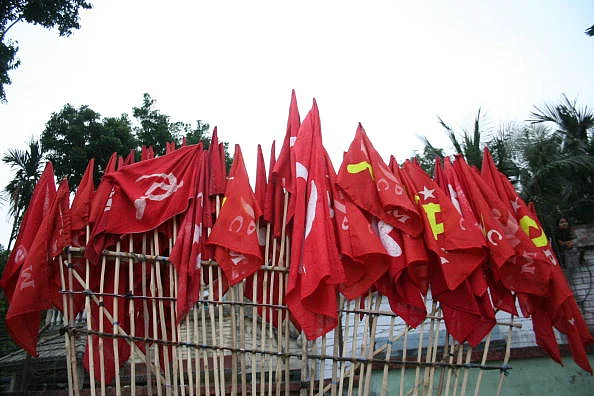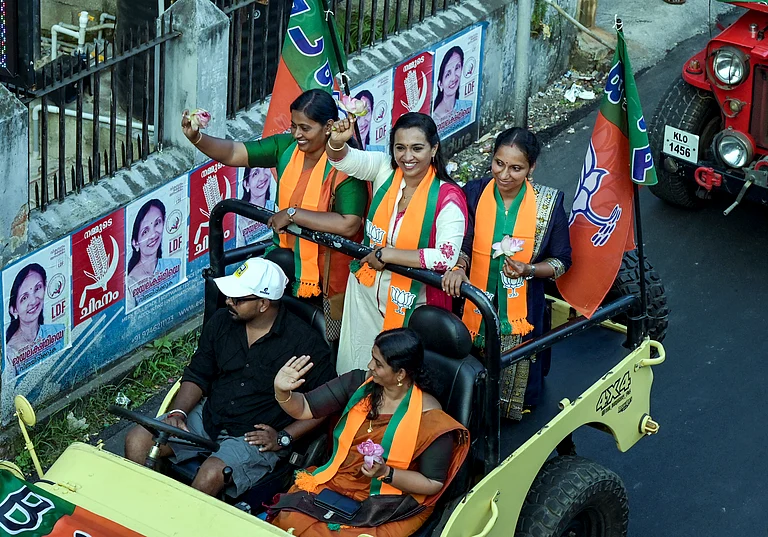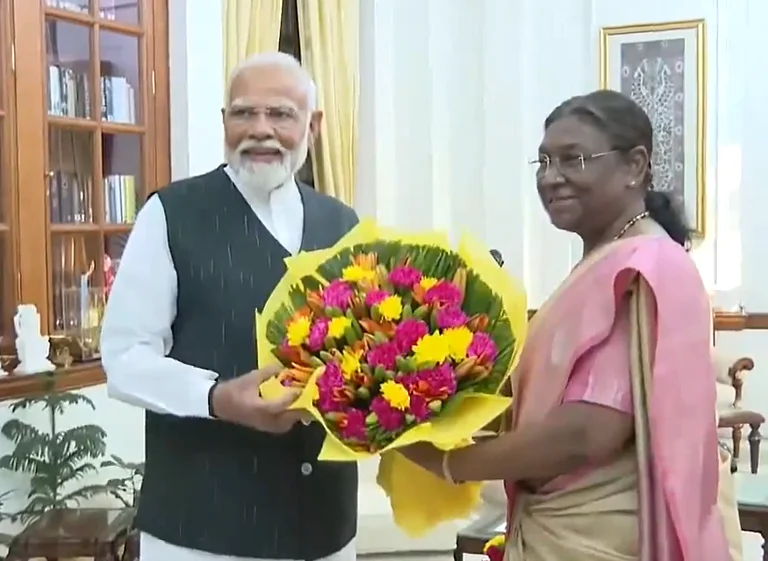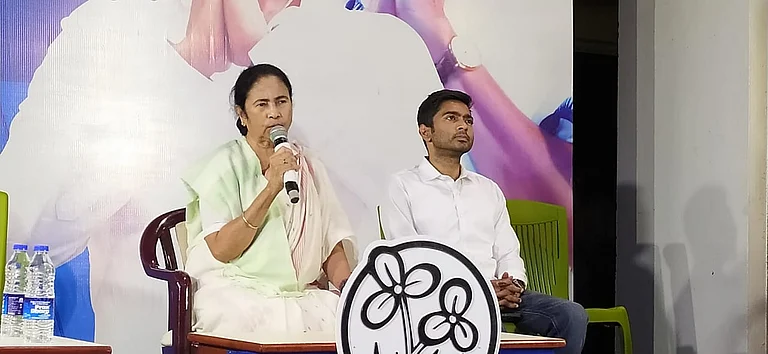The Left failed to score in Bengal. Yet again.
Starting with their rout in the 2019 Lok Sabha election, the Left bled heavily in the 2021 assembly polls, being thrown into near-irrelevance. They showed signs of recovery in the 2023 panchayat election. But it’s back to square one in the 2024 Lok Sabha election – not just in terms of the number of seats but also the vote share. Votes they recovered in the panchayat elections mostly went back to the BJP.
Despite significant media attention over the campaign of over half a dozen CPI(M) candidates, including veterans and young ones, they have drawn a blank. The Left fought the election in alliance with the Congress but failed to make any mark.
Of the 30 seats in which they contested, the Left candidates finished as the runner-up in only one, Murshidabad – the party’s most prospective seat from where state secretary Mohammed Salim contested. In most other seats, they came third. In four, they came fourth.
In 2019, when the Left and the Congress fought separately in most seats except Baharampur, Malda Dakshin and Jadavpur, the Left vote share stood at 7.4 per cent and the Congress’ at 5.7 per cent. Cumulatively, they had a 13 per cent vote share. The Congress won two seats but the Left drew a blank.
In the 2021 assembly election, the Left contested in alliance with the Congress and the newborn Indian Secular Front (ISF). Their cumulative vote share stood at 10 per cent — Left 5.7 per cent, Congress 3 per cent and the ISF 1.35 per cent. Only ISF won a seat.
In the 2023 rural polls, the three contested separately. The Left vote share increased to 13.2 per cent and the Congress secured 6.42 per cent. But in 2024, the Left-Congress alliance polled only 11 per cent — Left 6.3 per cent and the Congress 4.7 per cent.
The results have left the Left leadership and supporters upset, some devastated. Is there no way out of the dark?
Several political observers, however, think that all is not lost. They feel the election has also provided the Left with one of the preconditions for their growth – the weakening of the BJP.
The BJP failed to maintain its 2019 vote share of 40.6 per cent. Its 2024 vote share of 38.7 per cent is slightly above the 2021 assembly election vote share of 38 per cent. However, a decrease in its vote share compared to 2019 and an increase in the TMC’s vote share led to the BJP’s tally reducing in the state from 18 seats to 12.
Since the BJP has also weakened nationally, maintaining the momentum in Bengal would be difficult for the party, especially considering the internal conflict that keeps troubling the state unit.
Silver Lining?
According to Sibaji Pratim Basu, a political scientist at Vidyasagar University in Midnapore in the southwestern part of the state, despite the poor performance, the BJP’s weakening creates the space for the Left to grow.
Most Left supporters switched to the BJP seeking protection and expecting the toppling of the TMC regime. Now that they can see the BJP retreating, the Left has another chance to bring their voters back, feels Basu. However, while the space becomes available, the Left parties would need to work hard to make good use of it.
“They will have to shed arrogance. Their supporters need to stop insulting welfare schemes. Some of them have become a troll army on social media platforms. The TMC is on the ground 365 days a year. The Left, too, would have to be on the ground,” says Basu.
Basu feels that the Left leadership in the state will have to accept that the appeal of ideology has waned and there are no Leftist revolutions happening anywhere in the world that they can cite to catch people’s imagination.
“The Left will have to accept that currently they cannot get out of the paradigm of populist politics and they will have to reinvent themselves accordingly, acknowledging the importance of welfarism,” Basu tells Outlook.
Basu’s reference to cyber trolling, arrogance and insult to welfare schemes reminds us how the CPI(M) recently faced a social media backlash after the results came out.
A section of its supporters made abusive remarks at voters, alleging that they got sold like chickens and goats in the market for a price of Rs 1,000 each. The amount refers to the monthly assistance that many women receive under the Lakshmir Bhandar scheme. Its popularity helped the TMC electorally. After veteran writer Amar Mitra criticised such comments from Left supporters, he was subjected to trolling.
Following the controversy, Salim clarified during a media interview that the party does not endorse such comments. He said that he advises “self-proclaimed leftists” and “self-proclaimed revolutionaries” not to play “ultra revolutionaries” on Facebook.
“CPI(M) does not denounce women or such allowances. Why would we? Throughout the world, Leftist movements demand that governments at least subsidise people as compensation for not being able to give people their rights. Those mocking such schemes are not Leftists. They might be supporters,” Salim said.
Adding that the party acknowledges its responsibility of taking its message to the supporters, he said, “Some are rabid supporters. I urge them to continue supporting us but shed rabidity.”
Data Speaks
A look at some seats shows that the Left’s vote share marginally increased, compared to 2019, in a few seats, while decreasing in others.
In Dumdum seat in Kolkata’s northern outskirts, the Left vote share increased from 13.91 per cent in 2019 to 19.11 per cent in 2024. In Serampore, it increased from 10.86 per cent in 2019 to 16.2 per cent this time. In Krishnanagar, it increased from 8.8 per cent in 2019 to 12.64 per cent. In Howrah, it increased from 8.63 per cent in 2019 to 11.95 per cent. In Ranaghat it increased from 6.58 per cent in 2019 to 8.04 per cent. In Hooghly, it rose from 8.34 per cent in 2019 to 9.22 per cent.
Since Congress has a rather insignificant presence in these seats, the gain can be considered on the Left’s account.
However, in Murshidabad Lok Sabha, the 33.62 per cent vote share for Salim is less than expected. The Left and Congress fought separately in 2019 when their cumulative vote share stood at 38.42 per cent – 25.99 per cent for the Congress and 12.43 per cent for the Left. In the 2023 panchayat election, the Left-Congress combined vote share stood at nearly 40 per cent within Murshidabad Lok Sabha.
In the Jadavpur seat of Kolkata’s southern outskirts, the party’s vote share dropped from 21 per cent in 2019 to 16.5 per cent in 2024. Their vote share declined in Barrackpore, Bardhaman-Durgapur, Bardhaman Purba and Bishnupur.
Dwaipayan Bhattacharyya, a political scientist at Jawaharlal Nehru University (JNU) in New Delhi, feels the Left needs to focus more on developing social movements instead of an election-centric approach.
“The BJP’s decline in Bengal has started and will continue. But to occupy the space, the Left needs to build social movements and social organisations. It may take time to yield results but that long-term perspective is necessary,” he says.
He points out that the Left in Bengal started gaining in terms of seats in the 1960s, only after one and a half decades of leading social movements.
“Now that they are at their nadir, social movements are what they should start from. They should try to connect with every section of the society and consciously increase the representation of Muslims, Hindu backward castes and tribal people in their leadership,” he tells Outlook.
Salim acknowledges that the TMC has benefited from the voters’ anti-BJP sentiments observed nationally. “We wanted a strong third force combining the Left, Congress and the ISF but the ISF moved away at the last moment. Certain comments by some Congress central leaders also damaged our prospect,” he tells Outlook.
Salim did not specify which central Congress leader’s comment harmed them but it likely refers to Congress president Mallikarjun Kharge’s public schooling of Bengal Congress president Adhir Ranjan Chowdhury over the latter’s criticism of the TMC’s presence in the India bloc.
Kharge’s comments, which came on May 18 – with three phases of the election still due – helped consolidation of anti-BJP votes in the TMC’s favour in south Bengal, feel a section of CPI(M) and Congress leaders in the state.
Salim also says that the service that panchayat members and municipal corporators provide and the connection they build with the masses through these also play a significant role in determining electoral outcomes in Bengal, which is why the TMC gets so desperate to win local bodies. “The TMC got the advantage of having the local bodies in their control,” he says.
Salim is hopeful that the weakening of the BJP creates a vacuum in the opposition space. “The Left and the Congress will have to stay on course, make necessary corrections and work harder,” he says.
During 2013-16, a vacuum in the opposition space due to the Left’s weakening led to the BJP’s rise, thanks to having the powers of a powerful Union government at its disposal. BJP’s loss of momentum since 2021 creates the ‘objective conditions’ for the Left to work on. The BJP, apart from the vacuum, had the Modi wave and governmental power. The Left has limited resources to make use of the emerging space.




























